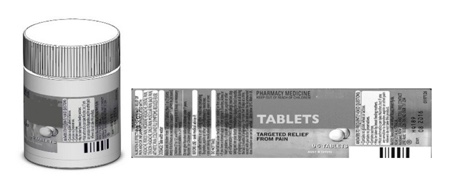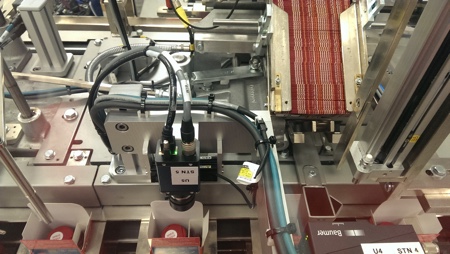Patient safety is of paramount importance in the pharmaceutical industry and if this is in any way compromised, companies face the spectre of product recalls, with all the costs for recall notification, product retrieval and liability, in addition to the potential damage to their brand and reputation. Industrial vision can play a key role in modifying the production process to help prevent the possibility of product recall.
At the time of writing, the Medicines & Healthcare products Regulatory Agency (MHRA) had issued 119 alerts and recalls for drugs and medical devices during 2015 and recalled 26 drugs, some of which were Class 2 recalls (to be implemented within 48hrs). Some of these are company-led recalls; others are as a result of problems identified in the field.
Products can be recalled for a variety of reasons, such as:
- Batch recalled due to particulate matter found in samples
- Batch distributed in the UK recalled because it is labelled for the Portuguese market
- Incorrect carton barcode identifies the product as 250mg tablets instead of 50mg
- Carton and ampoule labelled incorrectly, stating product can be administered by intra-articular means
- 25mg has been incorrectly printed in one position on foil packs; however, is correct in other positions
- The coloured band on a carton package is incorrect although text is correct
- Packs from a specific batch may have an over- or under-count of one tablet
- 50mg capsules are at risk of fungal contamination
- A smell associated with some batches, believed to be due to the foil packaging
- The paper side of the primary packaging could be punctured, compromising sterility
The ability of industrial vision systems to monitor, regulate, check, analyse, sort and classify with high precision, repeatability and safety, means that they can help to address all of these issues. Vision systems largely fall into two application areas: inspection during the manufacturing and packaging processes and inspection of labels, codes, etc. on the final products.
Vision and the integration process
Typical projects include the integration of cameras into existing production lines, combining vision systems with ancillary equipment, such as conveyors for product rejection, pick and place, robotics, or the provision of stand-alone inspections separate to the process if integration is simply not possible. This requires expertise in fields as diverse as mechanical design, mechanical handling and transport systems, software, electronics, robotics, control systems, factory networks and CAD.
In addition, it is important to understand specific requirements and standards for the industry, such as the security and auditing requirements for 21 CFR Part 11 validation. Given the potential complexity of these projects, many companies turn to specialist vision systems integrators.
The process begins by understanding the customer’s unique requirements to develop proposals to meet the specific manufacturing needs in terms of performance, reliability and adaptability
The process begins by understanding the customer’s unique requirements to develop proposals to meet the specific manufacturing needs in terms of performance, reliability and adaptability. Typical factors to be considered could include the linear speed of the system; the number of parts per minute for inspection, the product spacing and orientation and whether they arrive singly or in an array. These latter factors are important for the reject process.
There are a number of discrete stages for an integration project, which would include proof of process, system build, installation, commissioning, training and post-installation support.
The following examples illustrate projects that have been undertaken by Olmec UK in different areas of the production and packaging process.
Tablet inspection: If cross contamination occurs on a pharmaceutical tablet packing line it is possible for an incorrect, or rogue, tablet to get into the final packaging. An industrial vision solution allows accurate inspection of the tablets before packaging.
A redesign of the chutes carrying the tablets from a vibratory bowl feeder permits inspection of either falling tablets or tablets stacked up in the chute before they enter the pouches. A 1mm slit on each side of the chute allows the front and the rear of the tablets to be simultaneously imaged by 4k resolution tri-linear colour line scan cameras as they pass through. Each slit is illuminated by two high intensity spotlights which are strobed by a high speed controller that also handles the triggering of the cameras.
If cross contamination occurs on a pharmaceutical tablet packing line it is possible for an incorrect, or rogue, tablet to get into the final packaging
The system has to ensure that the lights for each camera are on only when that camera is acquiring its images. A PLC handles integration of the system into the packaging machine’s control system. A specially developed algorithm reads a slice of data from the front and rear of the tablet to confirm the correct colour combination, since different tablet batches may be homogenously white or blue in colour, or even bi-colour. Imaging in this way is important for bi-colour tablets since they can enter the chute in random orientations.
The system automatically stops the packaging line as soon as a rogue tablet is identified, ensuring that no rogues can enter the final pouches. The camera system was mounted on a specially designed C-shaped frame, which can be cantilevered out for cleaning and set-up of the packaging machine between batches.

'Unwrapped' line scan image from label on bottle
The system handles a variety of bottles at a variety of speeds. The bottles are randomly fed into a servo-controlled starwheel which rotates each bottle in turn to the camera position. The ‘unwrap’ process is achieved by using rollers to then rotate the bottle within the pocket of the starwheel in front of a line scan camera which builds up the image of the label line by line. A distortion-free image is produced so there are no false rejects and no possibility of any rogue products getting through.
Since the bottles do not need to be orientated before entering the system, speeds up to 120/min can be achieved. The entire inspection cycle takes just 500 milliseconds. The rotation of the bottle is synchronised with the scanning speed of the camera to eliminate deformations in the image. By precisely matching the mechanics of the starwheel with the image acquisition, the system offers a stability that minimises both false rejects and further software processing steps.
Carton inspection: A five-camera inspection system on a cartoning machine with two separate leaflet feeders can ensure that cartons not only contain a patient information leaflet but also that it is the correct one. The vision system, linked into the existing reject mechanism, also provides the option to ensure that the correct bottle has also been inserted into the carton. The cartoning machine cycles up to 70 times/min and is used for two different product lines.
Individual area scan cameras read the carton pharma code and check that the leaflet is in the carton as well as reading the leaflet pharma codes on two separate leaflet feeders. For one product range the leaflet is inserted into the carton and the product bottle pushed down on top of it.
For the other product, the leaflet is inserted into a dedicated pouch inside the carton, next to the bottle. On receipt of a trigger command, each of the five networked cameras sends data back to the line PLC which is responsible for all of the critical data flow, error handling and interfacing with the existing cartoning machine.

Checking leaflets are in the pouch in the carton
The cameras send back a combination of two leaflet and one pharma-code verification strings and Pass/Fail results for the ‘leaflet-in-carton’ checks. The PLC compares the data being read at each inspection point with stored data and confirms it is as expected. It also manages all of the results and updates the signal for the existing reject gate.




